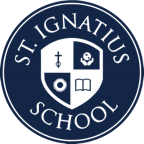Ms. Rebecca Imison
Teacher
Teacher
Third Grade
We believe in allowing students to make as many choices and decisions about their classroom life as possible, while retaining an environment and structure that is conducive to learning. We stress the importance of responsibility and respect for others as necessary adjuncts to choice. It is also of utmost importance that each child is seen as a unique, able, and worthwhile person by others in our room, and that together we respect and discover our diversity while coming to appreciate our similarities.
HOMEWORK
Written homework is usually assigned Monday, Tuesday, and Wednesday (usually a creative writing assignment related to the weeks spelling words). Please check your child's planner every day for homework instructions. Students will have had homework explained to them, but they must also write it in their planner for your benefit. Please initial any written work on the top left corner of the paper. iThere will also be reading homework (10 minutes oral reading to an adult, and 10 minutes silent reading, 20 minutes total). Please initial the calendar when reading is complete. There will also be short math assignments peiodically.
USE OF HOMEWORK FOLDERS/PLANNERS
To help your child in learning organizational skills, he/she will be using a homework folder a The folder contains a planner, folder with pockets, and notebook paper. The weekly spelling list is placed in the folder pocket. This folder goes home every day and comes back to school every day. Students will be instructed daily to write assignments in their planner. After you have checked your child's homework, and he/she has done the required reading (10 minutes orally, and 10 minutes silently), please initial both lines marked HK (homework), and R (reading). If both lines are not initialed I will assume the homework has not been done. Homework is generally due the following morning and is to be placed in the folder. Students will receive a sticker in the planner if required work is turned in by the 8:30 bell. *There may be a time when your child neglects to bring his/her folder home and is therefore unable to get the calendar signed by you. I request that you not come to the classroom the next morning to sign the planner.. Let them suffer the consequences. They may miss a recess, but the chances of forgetting the binder again will be greatly lowered. No eight or nine-year-old wants to miss recess!
*If your child does not show you the completed homework or you have not actually checked it over for neatness, correct heading, and following directions, then, please do not initial the planner.
COMMUNICATION FOLDER
Periodically you will see a "communication" folder coming home. Contained in this folder will be graded school work, parent letters, teacher notes, and important classroom-related messages. Please sign and date the form on the inside of the folder and return it to school with your child the following day.
MATH
There are three major areas third grade focuses on in Math. These areas are: 1. to develop understandings of multiplication and division, and strategies for basic multiplication facts and related division facts, 2. to develop an understanding of fractions and fraction equivalence, 3. to describe and analyze properties of two-dimensional shapes, including perimeters.
SCIENCE
Our science program is designed to meet state science standards. Many children learn by hands-on activities, and many children learn by reading about science. This program combines the two. It is fun and exciting for the children. Our focus areas in third grade are: states of matter, seasons, arthropods, life cycles, and force. In our engineering design project the students will be creating a useful machine after they have studied inclined planes, levers, pulleys, and gears.
OUTREACH
Once a month the school and parish serve a delicious chicken dinner to the homeless at Transition Projects and Jean's Place. Since third-graders are not yet old enough to help prepare the food, (eighth grade does this) they will be making favors and/or writing notes every month. The people appreciate this so much, especially the women at Jean's Place.
HUMAN SEXUALITY
I will begin this archdiocese approved program after Easter. Feel free to ask me if you want to take the teacher's edition home to review for one or two days.
COOPERATIVE LEARNING GROUPS
Along with the traditional role of providing students with basic skills and information, students must also be prepared to be full participants in today's world. They must be capable of higher-level thinking skills, communication skills, and social skills. They need to learn how to interact and work as a team, just like most workplaces of today and the future will require. Periodically students will work in groups of four or five to practice these skills. All students in the group are expected to give and take, to carry their weight, and hopefully will produce more than if they had worked alone.
CLASS PARTIES
We will have two class parties this year, Halloween and St. Valentine's Day. These will be arranged by our wonderful room parents. I'm requesting a one-time donation of five dollars for each child to take care of the cost of the parties. This is so much easier than asking for individual items from parents. Anything left over will be used for a special treat at the end of the year. This will be the only time you'll be asked for party money. I promise!
TEXTBOOKS
Textbooks may be brought home at any time! Generally, I don't give homework assignments that require the use of the textbook. If they are brought home they must be returned to school the next day as they will be used during the day.
